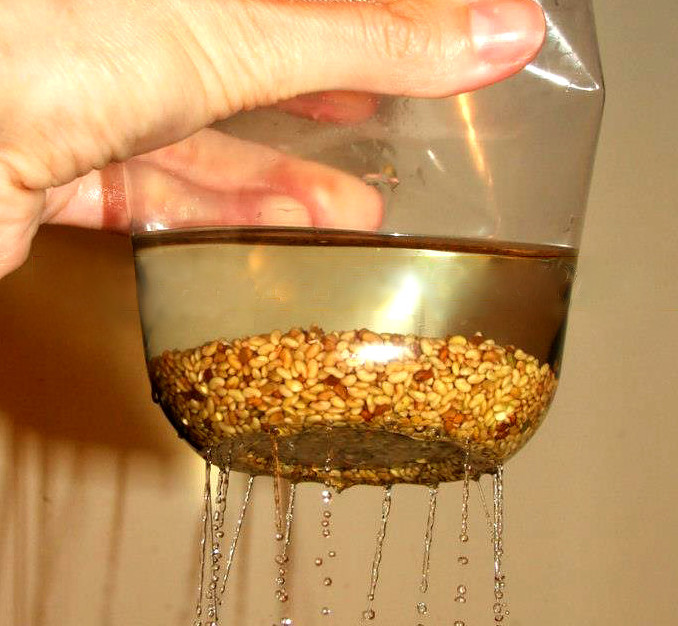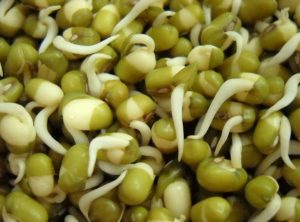This is a method of rinsing using a recycled plastic yoghurt pot (or something similar), with holes made in the bottom (from the inside). Put a handful of soaked seeds inside, rinse them well and drain them by placing the lid on top and gently squeezing the plastic pot until all the water drains out through the small holes in the bottom. Returning bubbles will help the cleaning process. The rinsing and draining need to be repeated regularly once in the morning and once in the evening.
Rinsing of small seeds like alfalfa, clover, broccoli etc can be cumbersome due to the capillary retention of water. Normal glass jars with any kind of mesh are not able to remove the retained water. Water will not simply drain off by gravity as it is held by the seeds themselves. Seeds then don’t have access to air and start to rot. This is one of the reasons why you cannot sprout large amounts of small seeds in jars, even if you have big jars. Fabric cloth (cheese cloth) used as a screen will soak up the water, but prevent air circulation due to the wet fabric, and again – seeds will start to rot.
Using a squeezable container with a lid and perforated base will force the water out via gravity and air pressure created by squeezing the container. By releasing the pressure the container will return to its former shape, pulling the air in again through the perforated end. The air bubbles created add to the cleaning of the sprouting seeds, removing spores and dust particles that stick on the sprouts, on their way up. The squeezing speeds up the rinsing process and cleans the sprouts at the same time. As a result you have super clean, moist but not soggy sprouting seeds and unblocked drainage holes that ensure air circulation.
I know it sounds a bit like a rocket science, but you have to try it to see that it’s a simple and effective home-made system that works better than it sounds when described.
By the way, when sprouting in earthenware you avoid the capillary retention by not rinsing the seeds directly, but by keeping them in a humid environment created by the moist clay. Again, simple and effective.
Thanks to Lucia Kostelnik of Gaia Sprouters.


